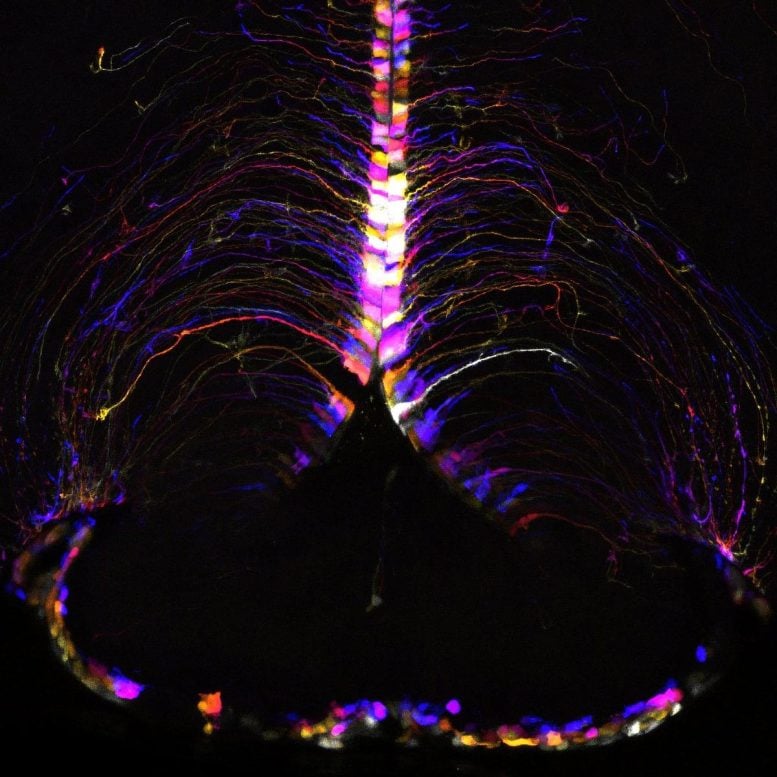 |
|
Kaloula discordia Poyarkov, Gorin, Bragin & Nguyen, South Vietnamese Painted Frog | Ễnh ương Nam bộ Kaloula laosensis Poyarkov, Orlov, Gorin & Milto, Laotian Painted Frog | “ອື່ງຢາງລາວ in Gorin, Orlov, Bragin, Pawangkhanant, Milto, Le, Nguyen, Dufresnes, Suwannapoom et Poyarkov, 2024. Photographs by A.M. Bragin and N.L. Orlov. |
Abstract
Despite increased attention by molecular taxonomists, the herpetofauna of Southeast Asia still hides many undescribed species among far-ranging taxa. In this study, we re-examine the mitochondrial diversity of painted frogs of the microhylid genus Kaloula, based on ~2,455 bp of published and new 12S and 16S rRNA sequences, and describe two new species from the tropical forests of southern Vietnam and central Laos based on integrative evidence. These species, which belong to the K. baleata complex, feature species-level mitochondrial divergence (> 4.4% at 16S rRNA) and are both morphologically well-differentiated from each other and from the recently described K. indochinensis, to which they were previously confounded. Comparative examinations also indicate distinct male advertisement calls and unique coloration features. Based on genetic barcoding, we preliminarily revise the species distribution ranges in the K. baleata complex, which support a general pattern of biogeographic partitioning that has been widely retrieved among the Indochinese amphibians studied so far. Molecular diversity within K. baleata further suggests genetic structure across Sundaland, namely three shallow mitochondrial haplogroups worthy of fine-scale phylogeographic and taxonomic investigations. Furthermore, our study highlights the propensity of amphibian species “hidden in plain sight,” even among recently studied taxa, thus calling for caution when specifying type specimens—the type series of K. indochinensis, described in 2013, includes specimens of the one of the new species. Our study emphasizes the continued need for thorough herpetological surveys even in supposedly well-known parts of Indochina and sets the ground for future research in Kaloula painted frogs, notably to test evolutionary and taxonomic hypotheses with genomic loci.
Key Words: 16S rRNA, bioacoustics, DNA barcoding, Laos, morphology, Southeast Asia, systematics, taxonomy, Vietnam
 |
| Genealogical relationships of the genus Kaloula based on the analysis of mtDNA fragments, including 12S rRNA, tRNAVal, and 16S rRNA gene sequences. Numbers at tree nodes correspond to PP/UFB support values, respectively. Black circles correspond to well-supported (PP ≥ 0.95 or UFB ≥ 90) nodes. Numbers in bold following sample names correspond to localities in Fig. 1 and Table 1. The information on GenBank Accession Numbers, museum vouchers, and localities of origin for sequences used in this study is summarized in Table 1. The holotypes of Kaloula discordia sp. nov. and Kaloula laosensis sp. nov. are marked with asterisks (*H). Photographs by N.A. Poyarkov and N.L. Orlov. |
 |
| Known distribution of the Kaloula baleata species complex members in Indochina. |

 |
| Breeding habitats of Kaloula discordia sp. nov. (A, B) and lateral view of holotype of Kaloula discordia sp. nov. in situ (ZMMU A-8134) (C).
Photographs by A.M. Bragin. |
Kaloula discordia Poyarkov, Gorin, Bragin & Nguyen, sp. nov.
Diagnosis: Kaloula discordia sp. nov. is distinguished from its congeners by the following combination of morphological characters: (1) medium body size (SVL 42.9–56.2 mm); (2) eyes comparatively small (eye length comprising 60%–75% of snout length); (3) dorsally uniform dark olive-brown; (4) beige-gray ventrally with irregular white mottling on belly and limbs; (5) pale yellow or orange-brown 8-shaped patch on either side of the neck posterior to eyes; (6) yellowish to orange axillary patch present; (7) grayish to beige-yellow inguinal patch present edged with black markings; (8) from gray to beige spot on tibiotarsal articulation present; (9) dark interorbital bar absent; (10) enlarged, widened finger disks (3FDD 6.5%–7.5% of SVL), ca. 1.27 times wider than toe disks; (11) finger subarticular tubercle formula: 1:1:2:2; (12) toe subarticular tubercle formula: 1:1:2:2:2; (13) two metacarpal tubercles not in touch with each other; (14) two metatarsal tubercles, outer metatarsal tubercle rounded, smaller than elongated inner metatarsal tubercle.
Etymology: The specific epithet “discordia” is a noun in apposition, in the nominative case, given in reference to the Roman mythological goddess Discordia. According to the poet Hesiod, this goddess personified not only strife and discord but also competition and labor (Hesiod, Theogony: 20–24, 226–230; see Most 2006). The duality of this name echoes the two aspects of the discovery of the new species. The first aspect is the authors’ hard work and laborious approach in collecting data for the description of the new species. The second challenge pertains to the authors’ internal struggle to choose a politically correct and neutral name for the new species. In modern taxonomy, international teams often face the common challenge of strife and competition; however, this can also lead to overall scientific progress.
We recommend “South Vietnamese Painted Frog” as the common name in English, “Yuzhnovietnamskiy Bychiy Uzkorot” as the common name in Russian, and “Ễnh ương Nam bộ” as the common name in the Vietnamese language.
 |
| Dorsolateral (A) and frontal (B) views of the holotype of Kaloula laosensis sp. nov. in situ (ZISP 15284, male).
Photographs by N.L. Orlov. |
Kaloula laosensis Poyarkov, Orlov, Gorin & Milto, sp. nov.
Diagnosis: Kaloula laosensis sp. nov. is distinguished from its congeners by the following combination of morphological attributes: (1) medium size (SVL ranging 44.0–54.8 mm); (2) eyes comparatively large (eye length comprising 75%–100% of snout length); (3) dark-brown dorsally, with numerous irregular dark blotches forming pericloacal ring; (4) gray or beige ventrally with dense white mottling on belly and limbs; (5) orange triangular patch on either side of the neck posterior to eyes; (6) bright-orange axillary patch present; (7) orange inguinal patch present; (8) bright-orange butterfly-shaped blotch above cloaca present; (9) gray spot on tibiotarsal articulation present; (10) dark interorbital bar present; (11) enlarged, widened finger disks (7.8%–7.9% of SVL), ca. 1.53 times wider than toe disks; (12) finger subarticular tubercle formula: 1:1:2:2; (13) toe subarticular tubercle formula: 1:1:2:2:2; (14) three metacarpal tubercles, median metacarpal tubercle in contact with inner metacarpal tubercle; (15) two metatarsal tubercles, inner metatarsal tubercle ca. three times larger than outer metatarsal tubercle; (16) three small supernumerary tubercles at the basis of toes I, III, IV.
Etymology: The specific epithet “laosensis” is an adjective in the nominative case, given in reference to the new species’ distribution in central Laos. The name also mirrors the specific epithet of K. indochinensis, with which the new species was previously confused. We recommend “Laotian Painted Frog” as the common English name, “Laosskiy bychiy uzkorot” as the common name in Russian, “Ễnh ương Lào” as the common name in Vietnamese, and “ອື່ງຢາງລາວ” (“Ung Yang Lao”) as the common name in Lao languages.








Leave a Comment